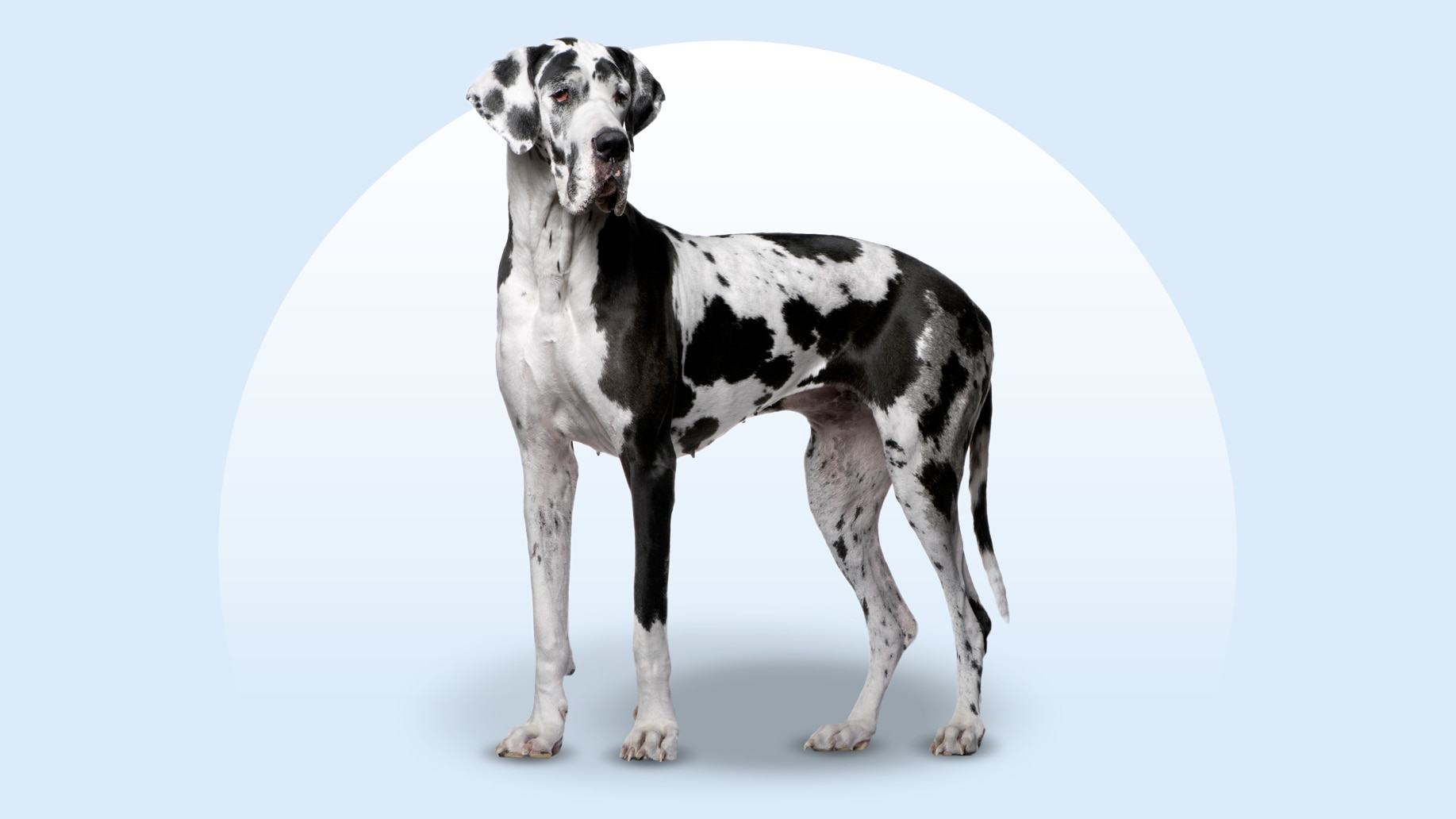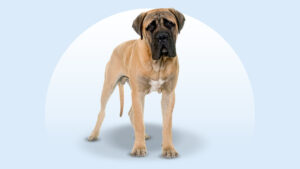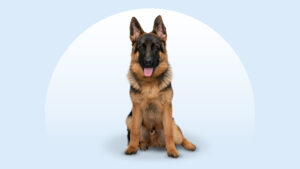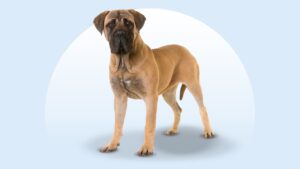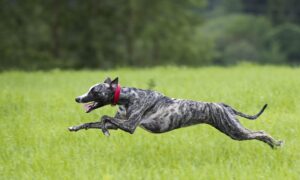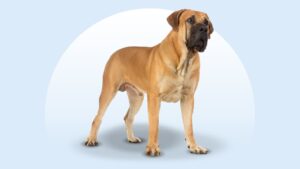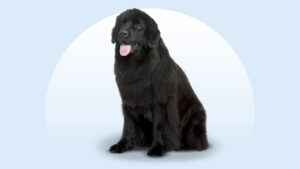Great Dane
Updated June 4, 2025
Great Dane
Updated June 4, 2025
As regal giants, Great Danes are great family dogs with a low-key personality and surprisingly reasonable exercise needs. Their size might be intimidating at first, but the amount of love they have to give is just as big as they are.
Affectionate, Calm, Goofy
110–175 pounds
28–32 inches
7–10 years
Black, Blue, Brindle, Fawn, Harlequin, Mantle, Merle
Great Danes want to be in the middle of everything, so chances are you’ll find them trying to “help” in the kitchen, trying to nap on your lap (you wanted a 140-pound lapdog, right?), or trying to say “I love you” with their trademark “lean.”
Elegant yet silly, these delightful giants are simply impossible to ignore—and who would want to? Known for carrying themselves with dignity (even if those jowls are hard to take seriously), Great Danes also have a goofy side that comes out around the people they love the most.
Great Dane Characteristics
Great Dane Appearance
The Great Dane size is their most obvious physical trait; they’re one of the tallest dog breeds, standing an impressive 28 inches (at least) with all four paws on the ground.
They have long, floppy ears and adorably droopy jowls. Yet, they also possess a distinct elegance and dignified air that comes with a side of mischief and humor.
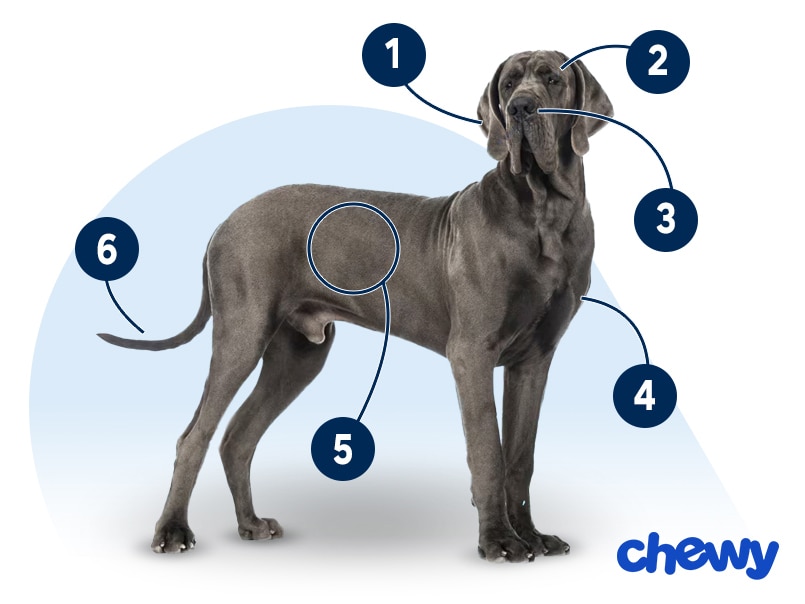
- Ears
Great Danes have medium-sized ears. While it was once common to crop (or cut) Great Dane ears, nowadays many of these pups have their ears intact and floppy. Many groups, including the American Veterinary Medical Association, oppose ear cropping, and many countries as well as U.S. states have banned the practice.
- Eyes
Their eyes are almond-shaped and dark, except in harlequin and merle Great Danes, where blue or other colors are possible.
- Nose
A Great Dane’s nose is usually black. Blue Great Dane noses are dark blue, while harlequins and merles may have spotted noses. The muzzle shape is broad and deep.
- Coat Length
Great Danes have a short, thick, and smooth coat that looks glossy.
- Coat Color
Great Dane colors vary wildly, including black, blue, brindle (subtle tiger stripes), fawn, harlequin (white with black patches), mantle (black with white patches), and merle (mottled patches of color).
- Tail
Great Danes have long, tapered tails.
Great Dane Temperament
A Great Dane’s size might be intimidating at first, but their personality is anything but. They’re loyal, kind, and eager to make you as happy as they are.
If you thought only pint-sized pups could be Velcro dogs, think again. Great Danes love to keep you in their line of sight. Consider it an honor that they love you enough to follow you anywhere (even to the bathroom). And don’t be surprised if your Great Dane tries their best to be a lap dog.
Great Danes may seem shy, aloof, or reserved at first, but that’s usually because they haven’t gotten to know you yet. Socializing your dog at an early age will help them become more comfortable around new people and other four-legged creatures.
Great Danes have a deep, powerful bark that can be jarring for visitors or even their parents, but it’s just their way of alerting you to something they think is very important. They can’t help that they’re a tad loud, after all.
How to Care for a Great Dane
These pups have minimal grooming needs, which will give you time to focus on training your Great Dane so they grow into a happy, well-mannered dog.
Grooming
Training
Diet
Exercise
Environment
Great Dane Health
The average Great Dane lifespan is 7–10 years. Before bringing home a Great Dane puppy, know that these giant canines do have some common health issues and are somewhat more expensive to take care of simply because of their enormous size (they weigh more than some adults!).
Some common Great Dane health issues include:
- Bloat and gastric dilatation-volvulus (GDV): Great Danes, like many large breeds, are prone to life-threatening bloat and GDV, when the stomach gets distended with air and/or food, twists on itself, and cuts off blood supply to the stomach and spleen. Symptoms include abdominal distension, restlessness, and dry heaving. If you notice these signs, go to the vet immediately.
- Degenerative lumbosacral stenosis: A form of degenerative myelopathy (DM), this spinal condition causes lower back pain that can progress to an inability to stand. Obesity can exacerbate the issue, so it’s important to keep your Great Dane at a healthy weight.
- Heart disease: Dilated cardiomyopathy (DCM), or an enlarged heart, is one of the most common heart diseases in large-breed dogs. It results in thin and weakened heart muscles that can lead to heart failure.
- Hip dysplasia: Hip dysplasia is a genetic condition that develops in Great Dane puppies when the hip joint doesn’t align well and becomes looser than normal. Signs include limping, and treatment might involve weight loss, joint supplements, physical therapy, or, in severe cases, surgery.
- Wobbler syndrome: Wobbler syndrome is a neurologic condition, especially in dogs with large heads and necks like Great Danes. Also known as cervical spondylomyelopathy, it’s a painful disease of the neck vertebrae that affects the spinal cord and can lead to wobbly walking. It may be linked to nutrition, so be sure to ask your vet about a high-quality, large-breed puppy food and when to transition to adult food.
Great Dane History
Once upon a time, the Great Dane was a working dog with an important job. The breed descends from ancient Mastiff-type dogs, and even though you might assume the Great Dane came from Denmark, their origins are in Germany. It’s a mystery why the breed’s name refers to a Scandinavian country instead.
In the 1800s, the forebears of the Great Dane were used to hunt boar, and they were also guardian dogs. The American Kennel Club (AKC) recognized the Great Dane in 1887, and the Great Dane Club of America was established in 1889.
Today, the Great Dane is one of the most popular breeds in the U.S. and has inspired many bright but goofy fictional Great Danes—Scooby-Doo, Marmaduke, and Astro, to name a few.
Great Dane puppies tend to cost between $1,000 and $3,000. If you choose this route, pick a responsible breeder.
You can also consider Great Dane adoption, as there are many dogs in need of a good home. Reach out to a Great Dane rescue like Team Rocky, keep an eye out for the breed at your local animal shelter or rescue org, or search Chewy’s database of adoptable dogs in your area.
